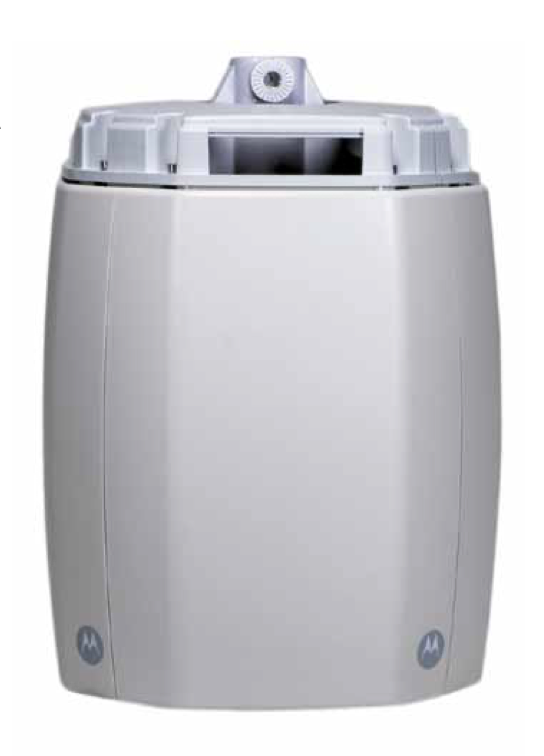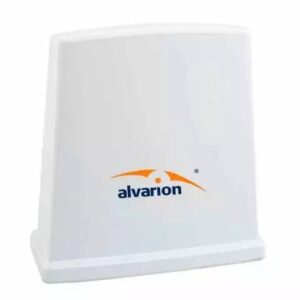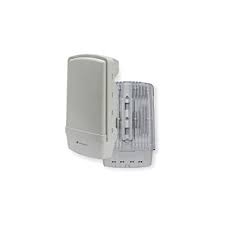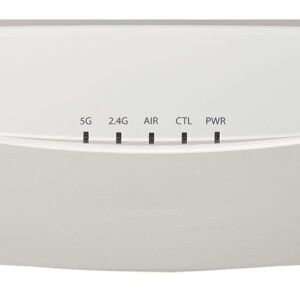MOTOROLA AP 7181 Elevating Bandwidth to the Nth Power
The Mesh Wide Area Network (MWAN) AP 7181
is a best-in-class, high power, multi-radio outdoor 802.11n access point with ADEPT (ADvanced Element Panel Technology) integrated antenna technology.
It offers the highest mesh capacity to support the long-term wireless network needs of both municipal and enterprise customers. As one of the leading, high performance, outdoor 802.11n access points on the market, the AP 7181 delivers outstanding network capacity and a maximum data rate of 300 Mbps.
The AP 7181 has been engineered from the ground
up to take advantage of the full benefits offered by 802.11n technology. The ADEPT Antenna system of the AP 7181 is a key example of this. By embracing the standard and optimizing radio hardware and software components, maximum throughputs and connections for mesh networking are realized. The AP 7181 delivers fast, stable connections and allows 802.11n technology to be easily deployed outdoors.
Mesh Wide Area Networks can achieve maximum data rates by leveraging ADEPT antenna technology. This advanced system, harnessing the full capabilities of MIMO, is a defining feature of the AP 7181. Designed specifically for this addition to the Motorola MWAN portfolio, the integrated ADEPT antenna system overcomes the limitations of multiple vertical dipole antennas (sticks) often used in combination with many access point technologies.
but rather a Single Input and Multiple Output, or SIMO, configuration. As a result, this will prevent capacity benefits being realized in these products.
Most wireless 802.11 a/b/g access points today transmit using vertical dipole antennas (sticks). These antennas use only vertically polarized transmissions, effectively limiting the access point to a single spatial stream.
With a 3×3 dual radio AP, up to 12 stick antennas would be required to achieve optimal coverage, creating aesthetic as well as potential signal shadowing issues. Motorola’s ADEPT antenna system contains a total of 8 antenna arrays per band that are individually connected to the RF hardware. A dual band 2.4 GHz and 5.8 GHz system contains 16 antenna arrays that are packed into 4 panels surrounding the 802.11n enclosure.
ADEPT antenna technology enables outdoor APs to leverage the full high bandwidth advantage of the 802.11n standard. By providing breakthrough mesh performance in every band, it assures predictable coverage and fast client connections; stable, high performance intra-mesh links; and a compact, aesthetic product that offers more choices for mounting locations than traditional “stick” antennas.
The 802.11n technology standard offers a variety of physical layer diversity mechanisms for achieving higher throughput and improved packet reception capability. Each 802.11n radio can have multiple transmit antennas and paths. Multiple spatial data streams can be transmitted at the same time, on the same channel, but by different antennas. The data streams can be combined from multiple receivers using advanced signal processing. When discussing 802.11n or MIMO networks, three numbers are typically referenced – the first is the number of transmit antennas, the second is the number of receive antennas and the third is the number of spatial streams. For example, a 3×3:2 system has three transmit signals, three receive signals and two spatial streams. AP 7181 has 3 inputs and 3 outputs, typically represented as 3×3. Why is this important? Some alternative competitive products do not support a true 802.11n MIMO scheme,







